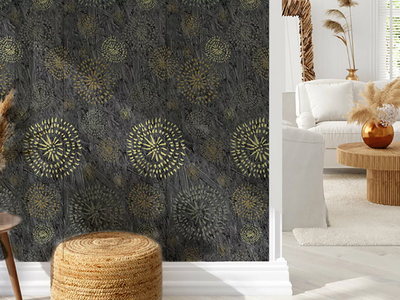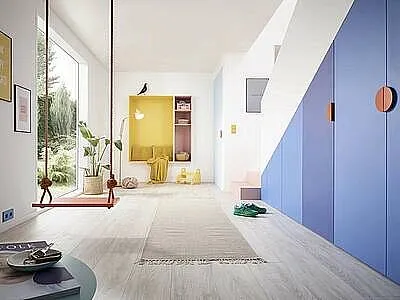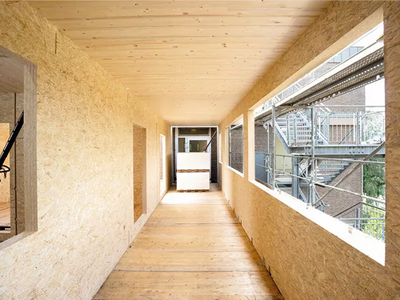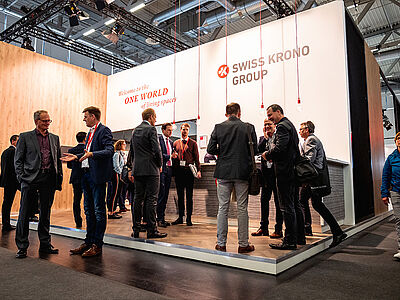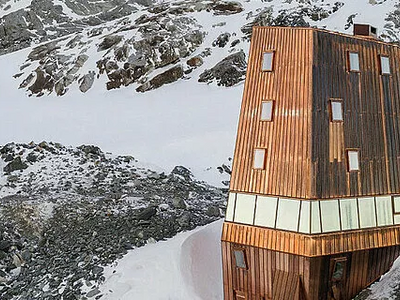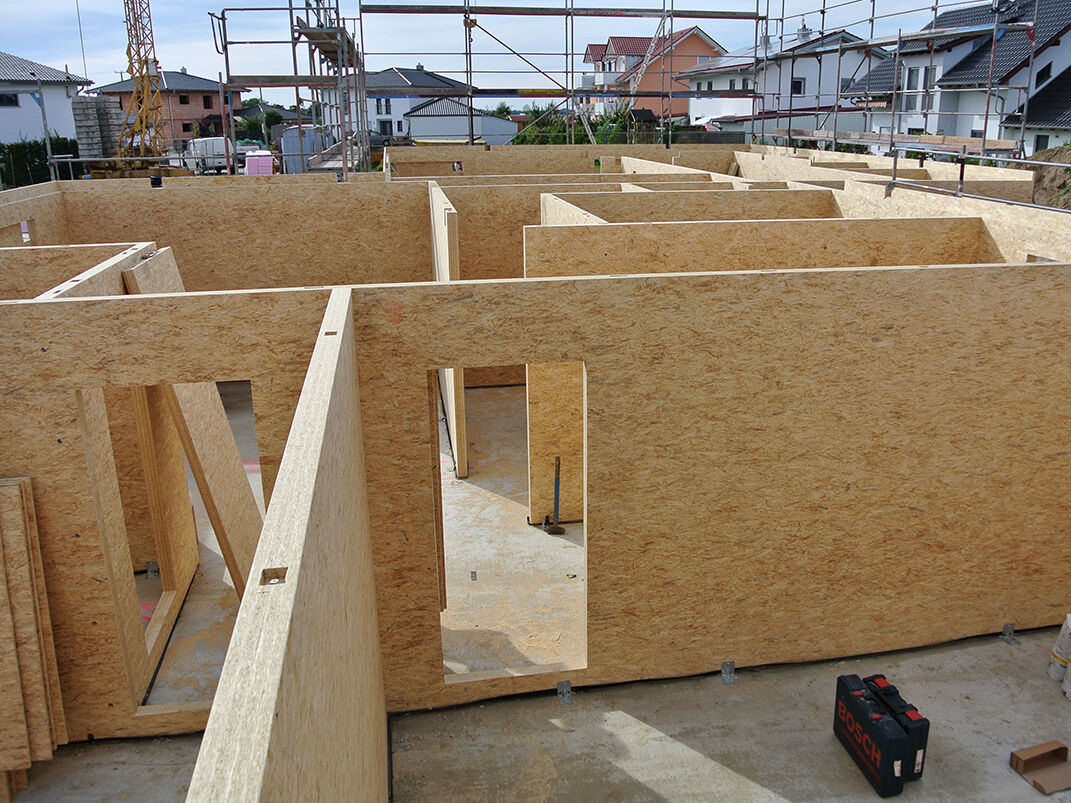Building with wood
We all share responsibility for conscientiously managing natural resources. How we construct buildings and how we live says a great deal about our level of environmental awareness. Timber and engineered wood products deliver a whole slew of benefits and are therefore rightfully regarded as the ideal materials of the future.
Wood is a truly incredible material for building! It is the only renewable building material, and engineered wood materials possess a number of unique advantages for improving energy efficiency and acoustic insulation. Timber construction used to be mainly associated with log cabins, barracks and garden houses, but today it has advanced to become a high-tech approach that excels in every respect. This explains why more and more houses are being built out of wood in Germany and elsewhere. Planners, architects, tradespeople and owner-builders are all choosing wood and wood-based materials more and more often: for single-family detached homes, urban housing and commercial structures, among other things.
Sustainability: Inherent in Timber Construction
Sustainable construction impacts all phases of a building’s lifecycle: from planning and erection across use and subsequent repairs and additions all the way to disassembly or demolition and ultimate reuse, recycling or disposal. At all times, the chief aims are to efficiently use energy and natural resources while minimising harmful impacts on the environment. SWISS KRONO has therefore formulated its own sustainability criteria, which are strictly adhered to across all of the company’s sites.
Wood’s Properties Make It Excellently Suited for Building
Wood is extremely stable, having a networked structure consisting of rays that extend outward from a tree’s core to its surface, while running perpendicular to growth rings and being connected longitudinally by tubes called xylem. Consequently, even a small volume of wood exhibits a considerable loadbearing ability. The structure of wood also gives it great compressive strength (resistance to squeezing) and tensile strength (resistance to bending). Yet despite all this, it is relatively lightweight. A cubic metre of coniferous wood weighs 460 kilogrammes, only a fifth as much as a cubic metre of concrete; the same volume of steel even weighs 17 as much. This means that the foundations for timber buildings can be smaller, thus enhancing their cost-effectiveness. The relatively low weight of wood also makes it simpler and cheaper to transport, which additionally reduces costs. Due to the cellular structure of wood, it is also highly thermally insulating. When building with wood, the same insulating effect can be achieved with thinner walls. This in turn increases the amount of available living space by up to five to ten percent compared to concrete and steel. As high-tech building materials, wood and engineered wood permit extensive prefabrication. Modules are prefabricated in indoor shops where the work can continue regardless of weather conditions. After being transported to the construction site, they can then be rapidly assembled. Timber construction is a dry technique, in other words it doesn’t introduce any moisture into the structure as is the case when laying bricks or pouring concrete. This eliminates drying times and makes it possible for follow-on trades to start work right away.
Timber Construction Types
There are various approaches to timber construction:
1. Massive Timber Construction
Massive timber construction involves prefabricating sturdy but relatively lightweight wall, ceiling and roof modules using natural or engineered wood and then assembling them at the construction site. SWISS KRONO has developed the SWISS KRONO MAGNUMBOARD® OSB timber construction system for this purpose. Its elements already consist of multiple plies and are therefore predestined for extensive, extremely flexible prefabrication. A special advantage is the fact that they can be finished or coated without the need to cover them with other boards first. This makes SWISS KRONO MAGNUMBOARD® OSB a highly promising alternative to conventional glulam and cross-laminated timber elements.
2. Timber-Frame Construction
In this approach, a loadbearing frame is built and then covered and stabilised with OSB panels. As a rule, wall and ceiling modules are prefabricated in shops elsewhere, then transported to the building site and speedily assembled. As this is a dry construction system, follow-on trades can start work on the interior right away.
3. Panelised Construction
In panelised construction, walls and ceilings are largely prefabricated to permit quick assembly of the building on-site. These so-called panels comprise a timber frame, thermal insulation and OSB cladding. For extra-large structures, SWISS KRONO LONGBOARD OSB come in lengths up to 18 metres. They make it easy to quickly create very large panels without any joints
4. Modular Construction
Modular construction takes panelised construction a step further and prefabricates not just walls and ceilings but entire rooms. This additionally speeds up assembly at the construction site, even making it possible to erect multi-storey buildings very quickly.
5. Mixed Approaches
It is also easy to combine wood and wood-based products with other building materials such as bricks, concrete, glass and metal. This has advantages when modifying or extending existing buildings. The low weight and versatility of natural and engineered wood enable very cost-effective creation of new living space.
Aesthetics, Wellbeing and Healthy Living
There are virtually no limits to what can be designed and built with wood and wood-based materials. They can be used decoratively to take advantage of the natural beauty of wood or create ultramodern surfaces, aided by the fact that extremely variable looks can be created with them, giving rise to a huge spectrum of possibilities – even the wildest notions can be realised. Also in constructive applications, they lend themselves for creating bespoke buildings that satisfy highly individual wishes and expectations. Modern architectural ideas and unusual configurations and layouts are easy to implement with wood.
Wood and wood-based materials also have a positive impact on the climate inside buildings. It is namely quite true that wood breathes, thanks to its moisture-regulating properties. At the same time, natural and engineered wood have a thermally insulating effect, which explains why people consistently describe them as warm to the touch. Of course, this statement doesn’t refer to wood’s actual technical insulating properties but to how it is experienced with the senses.
Timber Buildings Last
Timber houses can get very old. The average age that buildings in general reach is around a hundred years, but still-standing timber houses erected in the Middle Ages show that wood lasts significantly longer than that. This is because of its very low moisture levels: dry wood doesn’t decay. It is simply unattractive to fungus and insects.
Wood and wood-based materials are also highly resistant to fire, despite widely held beliefs to the contrary! When they are exposed to flame, their surface chars, forming an insulating layer that keeps the temperature low further inside. This keeps the wood strong.

